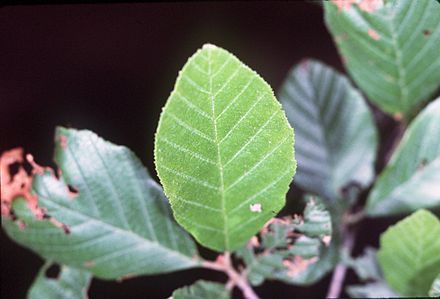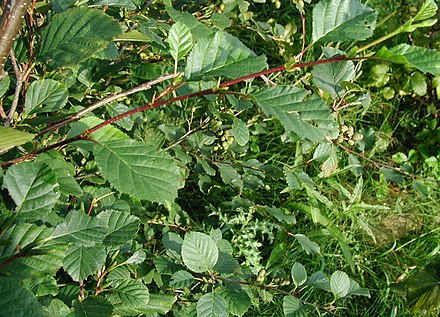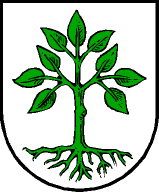Alder
Alders are trees comprising the genus Alnus in the birch family Betulaceae. The genus comprises about 35 species[2] of monoecious trees and shrubs, a few reaching a large size, distributed throughout the north temperate zone with a few species extending into Central America, as well as the northern and southern Andes.[1]
With a few exceptions, alders are deciduous, and the leaves are alternate, simple, and serrated. The flowers are catkins with elongate male catkins on the same plant as shorter female catkins, often before leaves appear; they are mainly wind-pollinated, but also visited by bees to a small extent. These trees differ from the birches (Betula, another genus in the family) in that the female catkins are woody and do not disintegrate at maturity, opening to release the seeds in a similar manner to many conifer cones.
The largest species are red alder (A. rubra) on the west coast of North America, and black alder (A. glutinosa), native to most of Europe and widely introduced elsewhere, both reaching over 30 metres (100 ft). By contrast, the widespread Alnus alnobetula (green alder) is rarely more than a 5 m-tall (16 ft) shrub.
Trees with stalked shoot buds, male and female catkins produced in autumn (fall) but stay closed over winter, pollinating in late winter or early spring, about 15–25 species, including:
Trees or shrubs with stalked shoot buds, male and female catkins produced in autumn (fall) and expanding and pollinating then, three species:
Shrubs with shoot buds not stalked, male and female catkins produced in late spring (after leaves appear) and expanding and pollinating then, one to four species:








